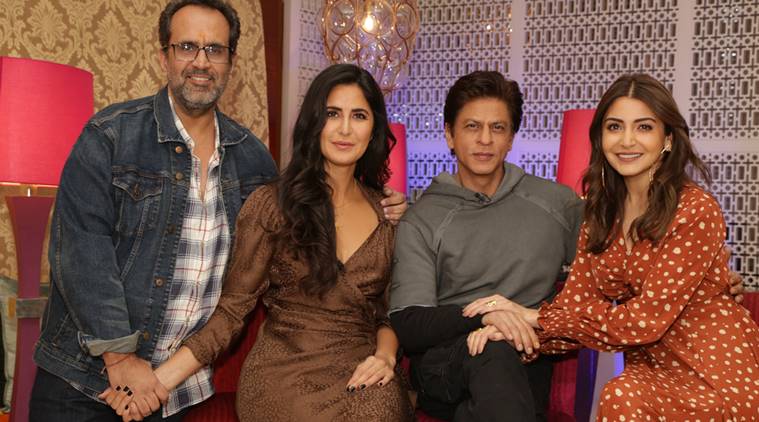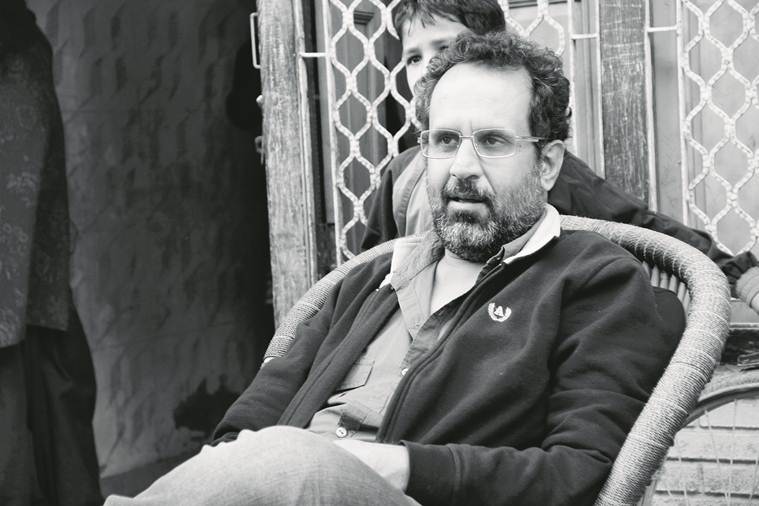Click here to follow Screen Digital on YouTube and stay updated with the latest from the world of cinema.
Defying Gravity
Director Aanand L Rai on his latest film, Zero, falling in love with the ordinary, and not knowing.
 A scene from Zero.
A scene from Zero.
I’ll tell you something I haven’t told everybody. The acceleration of gravity on the surface of the earth at sea level is 9.8 m/s2. In Zero, I wanted to make it 8.8,” says Aanand L Rai. It’s been a long week, the promotional activities surrounding his latest film have been relentless: continuous interviews for print, electronic and digital media. This is the last interview of the day, and Rai looks relaxed, sitting in his vanity van, legs tucked under him, and gamely answering questions he’s answered before. “When you play around with gravity like that, you’ll see that there is just the slightest levitation on the screen. It’s not like how you see it in a superhero film, but it’ll feel dreamy, and it’ll be believable. If it doesn’t feel close to reality, it’s nothing but a trick,” he says.
 Aanand L Ra
Aanand L Ra
In his first film with Shah Rukh Khan, Rai has taken the 53-year-old star and shrunk him to more than half his size, courtesy special effects. He’s also taken the lissome Anushka Sharma and put her in a wheelchair. One is a 38-year-old vertically-challenged bachelor, the other is a NASA scientist who lives with cerebral palsy; both stubbornly dream of a world not quite within reach. “When one looks at these characters, they might be filled with pity. But I wanted to negate those emotions entirely because they don’t need our sympathy. I want to celebrate life with all its incompleteness, and people with all their imperfections, because in a philosophical way, I want the audience to see that there is beauty in that state, and that it is very human too,” says Rai, who first thought of the idea nearly six years ago. But does one always have to resort to a love story to explore such ideas? “Let me tell you something: so many times one thinks that love is a trap, and they’re smart enough to avoid it; they can play the game and win. Only to realise much later, that they were in love, that they were happy. Can anybody actually point out the exact moment when people fall in love? I thought I was making a film about three people, but somewhere along the way, love enters the picture,” he says.
2018 has been a phenomenal year for Rai, whose company, Colour Yellow Productions, produced no less than seven films, including Anurag Kashyap’s Mukkabaaz and Manmarziyaan, Happy Phirr Bhaag Jayegi, and the genre-bending film, Tumbbad. And in most of these offerings, the 47-year-old filmmaker has worked with stories which explore a decisive moment of sorts, where characters come to terms with the fact that they cannot control how they feel about each other. “As a filmmaker, I too don’t want to ever feel that I know exactly what I am doing. Then why am I making films? Not knowing is the only thing that makes me wait for the magic to happen,” says Rai.
In Zero, Rai once again steps out of the cosmopolitan, uber-urban landscape of Delhi and Mumbai, and heads to Meerut, where Khan’s character, Bauua Singh, is from. “The Delhi middle-class world I grew up in has been transported to these smaller cities, and it’s a world I know so well. I won’t call them small-town either; they are not as small-minded as big city people perceive them to be. My Tanu, Datto, comes from there; Sunaina is from there. People are always saying that we should make films for the country’s youth. Where does most of India’s youth population come from? These tier-two cities, and they understand my films very well. They are not lesser than the girl or boy from Bombay or New York,” he says, adding, “Look at this year’s hits. Does it not tell you that we’re falling in love with our towns and our ordinariness?”
In the run-up to the film’s release today, both Rai and Khan have spoken very fondly of each other, releasing photographs on social media as they prepare to take on the dreaded box office. Is there anything that Khan has learned from spending time with him? “Eating. He used to eat very little, but I got him to eat more. What I’ve learned from him is how to keep on doing something till it feels right. I used to ask him to build on something in a scene and he will try and try till he delivers what I’ve asked for,” says Rai. So what about the VFX, how much of a role does it play in Khan’s performance and the film at large? “It’s very basic. I used to say that I’m not the right person to do a film with VFX, but I’ve revised that opinion about myself. I am the right person because I don’t get attached to the technology — I want VFX to get attached to me, and not as a technique but as an emotion,” he says.
- 0116 hours ago
- 0216 hours ago
- 036 hours ago
- 0417 hours ago
- 0517 hours ago


































